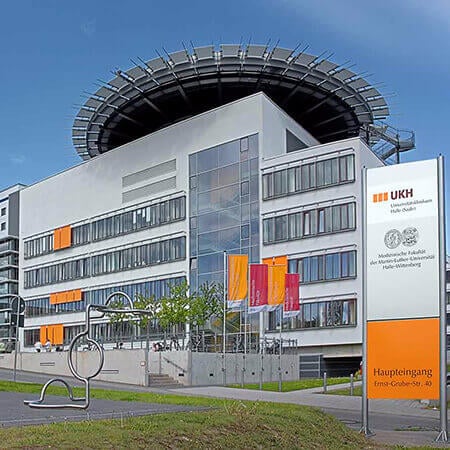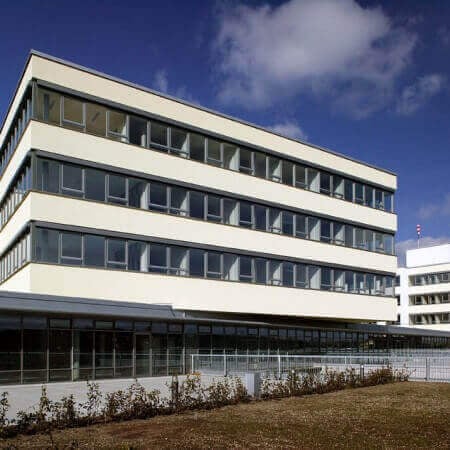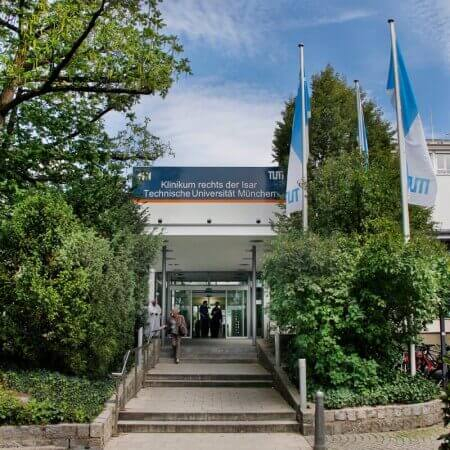Urethral stones are dense formations that form as a result of an inflammatory process or metabolic disorders that cause a change in the urine pH levels. They can form directly in the urethra or enter it from other parts of the urinary system. The disease leads to pain, impaired urination, and hematuria (the presence of blood in a person's urine). A stone injures the urethral walls, causing the development of strictures (cicatricial narrowing). With the development of acute urinary retention, the calculus may block the urethra completely.
To avoid complications, it is best to promptly seek treatment abroad. You can seek medical attention from one of the German hospitals. Treatment in Germany will allow you to completely get rid of stones in your urinary system, cure concomitant urethral diseases, and normalize your urination function. You are welcome to use the Booking Health service to find out the cost of treatment and choose a medical care program at the best price.
Content
- What causes the development of urethral stones?
- Diagnostics
- How do doctors in Germany treat urethral stones?
- Why to undergo your treatment abroad?
What causes the development of urethral stones?
The origin of urethral stones can be classified as follows:
Primary stones are formed directly in the urethra. As a rule, this occurs due to the existing diseases of this organ, which impede urine outflow. Predisposing factors may be strictures, fistulas, and diverticula. Giant stones with a diameter of several centimeters can form inside the diverticula (sac-like protrusions). Doctors often have to perform open operations for the treatment of such cases of the disease, as it is not always possible to extract and crush such stones with an endoscopic method.
Secondary stones enter the urethra from other organs of the urinary system. This occurs against the background of urolithiasis. Such stones are easier to treat because they are mobile, small, and can be returned to the bladder and crushed there by the extracorporeal or contact method.
Urethral stones are most common in children under the age of 10. The older you are, the lower your risk of urinary stones. After 30 years, they are very rare.
While kidney stone disease is more common among women, urethral calculi are more common in men. This is due to anatomical differences in the structure of the male and female urethra. Women have a straight, wide, and short urethra. Stones coming out of the urinary system do not linger in it. Female patients are mostly diagnosed with primary urethral stones, which are less common. The urethra in men is long, thin, and tortuous, with several natural constrictions. As a result, stones from the bladder or kidneys frequently become lodged in the canal, sometimes completely blocking its lumen and causing acute urinary retention.
Most stones found in the urethra are composed of calcium oxalate. Less commonly, these are struvite stones, phosphates, urates, or calculi of mixed structure. The density of the stone depends on the chemical composition. Accordingly, different methods of fragmentation can be used, with different chances of success.
Diagnostics
Patients visit a hospital with complaints of pain in the genital area or perineum, painful urination, a thin stream of urine, or blood in the urine. Some patients come to the hospital with signs of acute urinary retention. This means that urine is not excreted at all, since the lumen of the urethra is closed by a stone.
Diagnostics begins with a clinical examination and tissue palpation, as many stones can be detected by palpation.
Instrumental diagnostic methods can be used to assess the size of stones and determine their localization, shape, and density. Doctors in Germany use ultrasound or CT scans. With their help, stones can be found not only in the urethra but also in other parts of the urinary system. These diagnostic tests can also detect concomitant urethral pathologies.
How do doctors in Germany treat urethral stones?
In modern urology, preference is given to endoscopic treatment methods. But sometimes open surgery has to be performed to remove stones that cannot be extracted through the urethra into the external environment, safely fragmented inside the urethra, or pushed back into the bladder to be fragmented there.
The main treatment options for urethral stones at hospitals in Germany are as follows:
Lithoextraction. The closer the stone is to the "exit", the easier it is to remove it, and the greater the chance of success. Doctors at hospitals in Germany use endoscopic forceps and baskets to evacuate the stone. This is a minimally invasive procedure performed under local anesthesia. A gel with a local anesthetic is injected inside the urethra for several minutes, which not only anesthetizes but also facilitates the evacuation of the stone by sliding.
External urethrotomy. The therapeutic procedure implies urethral dissection. It can be performed if the stone is too large and cannot pass through the urethra.
Extraction through a fistula. Some patients develop fistulas, openings that lead from the urethra to the surface of the skin. The calculus is removed through such an opening and then the fistula will be closed.
Extracorporeal shock wave therapy. This is a technique for fragmenting stones using a device that is outside the human body. The calculus is first pushed into the bladder with an endoscope and then crushed inside this organ. After that, the fragments are freely released into the external environment. If they are too large, they may repeatedly get stuck in the urethra. In this case, the manipulation will be repeated. Repeated stone crushing results in the formation of smaller fragments that can pass through the urethra even in the narrowest places.
Contact lithotripsy. This is a technique intended for endoscopic stone fragmentation. The stone is usually crushed inside the bladder but not the urethra, and then it will be removed in parts and small fragments will be washed away. According to the method of performing lithotripsy, the procedure can be mechanical, electrohydraulic, laser, ultrasonic, or pneumatic. Doctors in Germany use advanced treatments that allow crushing even large and dense stones without injuring the organs of the urinary system.
Epicystostomy. In Germany, the procedure is performed as an emergency manipulation for acute urinary retention associated with urethral obstruction by a calculus. Doctors make a small incision above the pubis to insert a tube to drain urine. This manipulation gives time to prepare for the evacuation of stones.
Urethroplasty. The operation is performed in the case of concomitant strictures (cicatricial narrowing). Doctors remove part of the urethra and suture its ends together. Patients with a narrowing length of up to 2 cm do not require any additional procedures. In the case of a longer length of the stricture, the removed part of the urethra is replaced with tissues from other parts of the body (skin or mucous membranes, for example, from the inner surface of the cheek).
Surgical stone removal. When the calculus is located in the prostatic urethra in men, an open operation may be required if the stone is very large and cannot be shifted into the bladder and fragmented endoscopically. The intervention is performed with the use of a transvesical approach (which requires bladder skin dissection). Doctors in developed countries often perform minimally invasive laparoscopic operations instead of open surgery. And what is more, the best hospitals in Germany perform robot-assisted interventions.
Why to undergo your treatment abroad?
If you have been diagnosed with urethral stones, you can undergo your treatment for this disease in Germany. The best hospitals in this country use modern, minimally traumatic treatment methods that allow you to get rid of stones and avoid complications, while maintaining your urination function.
There are a few reasons for you to undergo your treatment abroad. These are the following:
- accurate diagnostics allows doctors to determine the location and size of the calculus, its composition, and density to optimally plan subsequent treatment;
- preference is given to sparing endoscopic procedures that involve pushing the stone into the bladder, crushing it, and removing it;
- successful treatment of urethral stones in complicated cases, for example, against the background of acute urinary retention or inflammation;
- doctors in Germany offer simultaneous treatment of urethral stricture and stones;
- other urethral diseases can be eliminated in the process of treatment, for example, diverticula or fistulas;
- stones can be simultaneously removed from different parts of the urinary system, that is, not only from the urethra but also from the kidneys, bladder, or ureter;
- if a large stone has to be extracted from the prostatic urethra, sparing laparoscopic and robot-assisted operations are performed instead of conventional open interventions.
You are welcome to use the Booking Health service to make an appointment for your treatment abroad at one of the Urology Centers in Germany. On our website, you can find out the cost of treatment and compare prices at different hospitals. The specialists from the Booking Health company will help you find the most suitable medical center and organize your trip to Germany. The cost of treatment for you will be lower than when you go directly to the hospital. Prices will be reduced due to the absence of taxes for foreign patients. When you choose a medical care program through Booking Health, you will receive insurance that will cover unforeseen expenses. The initial cost of treatment in Germany will therefore not increase for you, even if additional medical procedures are required.
Authors:
The article was edited by medical experts, board-certified doctors Dr. Sergey Pashchenko and Dr. Vadim Zhiliuk. For the treatment of the conditions referred to in the article, you must consult a doctor; the information in the article is not intended for self-medication!
Sources:
Verywell Health
Healthline




















